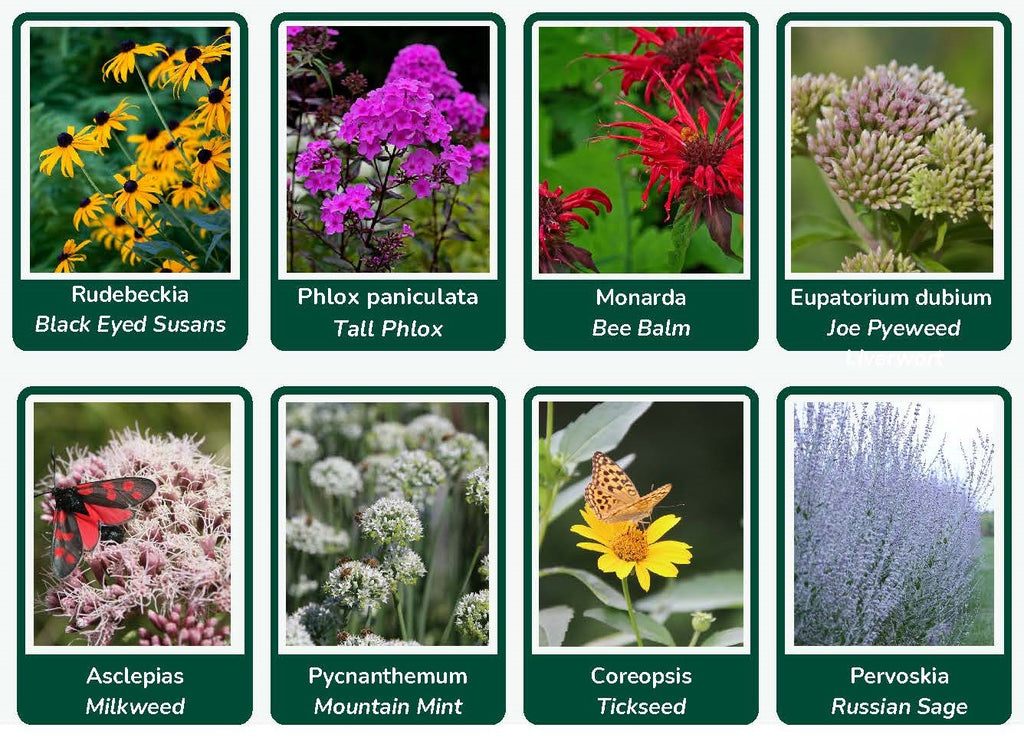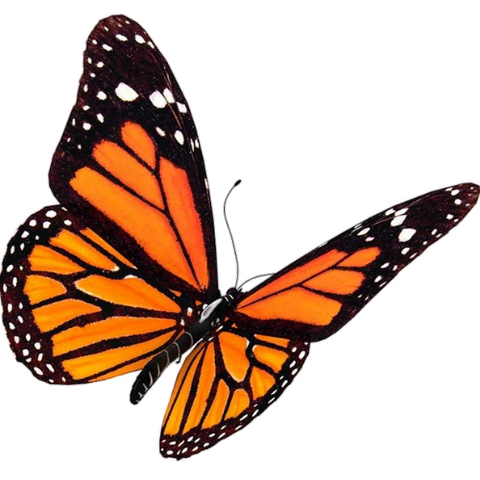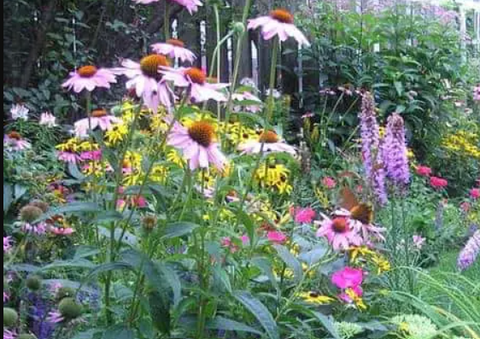As the summer heat and humidity settles in, many gardeners face the challenge of maintaining a vibrant garden. However, with the right selection of natives and ornamental perennials, you can ensure your garden stays in full bloom and becomes a haven for essential pollinators. Let’s explore some fantastic perennials that thrive in the mid-summer heat while also attracting and sustaining bees and butterflies through their diverse offerings of pollen and nectar.
![]() Embrace the Colorful Stars of Mid-Summer:
Embrace the Colorful Stars of Mid-Summer:
- Rudbeckias
- Phlox paniculata
- Pervoskia
- Pycnanthemum
- Monarda
- Asclepias
- Helianthus
- Eupatorium dubium
- Echinacea varieties
- Chelone turtlehead
- Coreopsis, and more


These are the heroes that brighten up your garden during the hottest months. Their resiliency and captivating colors will surely add flair to your outdoor space and be likely to withstand the high heat and humidity of July through August climate conditions.
Cindy’s yard has over 30 Asclepias plants of 4 varieties in 6 locations and all harbor Monarch caterpillars as well as beetles and tussock larva.
![]() Nourishment Through Plant Diversity: The benefits of having numerous perennial varieties go beyond aesthetics. By offering diverse types of pollen and nectar, you play a crucial role in promoting the health of bees and butterflies. Plants provide essential amino acids, proteins, anti-fungal properties, and sugars that keep these pollinators thriving.
Nourishment Through Plant Diversity: The benefits of having numerous perennial varieties go beyond aesthetics. By offering diverse types of pollen and nectar, you play a crucial role in promoting the health of bees and butterflies. Plants provide essential amino acids, proteins, anti-fungal properties, and sugars that keep these pollinators thriving.
![]() Creating Harmony Among Pollinators: Incorporating diverse plant species in multiple garden areas helps maintain a balanced ecosystem. Monarchs, for instance, may share their host plants with other insects like tussock moths, milkweed beetles, and milkweed bugs. Having multiple Asclepias varieties in various locations mimics their natural habitat, ensuring an ample supply of food for all.
Creating Harmony Among Pollinators: Incorporating diverse plant species in multiple garden areas helps maintain a balanced ecosystem. Monarchs, for instance, may share their host plants with other insects like tussock moths, milkweed beetles, and milkweed bugs. Having multiple Asclepias varieties in various locations mimics their natural habitat, ensuring an ample supply of food for all.
![]() The Art of Coexistence: One fascinating observation in pollinator gardens is how bees often appear to compete over flowers. However, by strategically planting various flower types across your yard in multiple areas, you can create a harmonious environment where pollinators coexist peacefully, allowing them to access the resources they need without conflict.
The Art of Coexistence: One fascinating observation in pollinator gardens is how bees often appear to compete over flowers. However, by strategically planting various flower types across your yard in multiple areas, you can create a harmonious environment where pollinators coexist peacefully, allowing them to access the resources they need without conflict.
![]() Supporting the Future of Pollinators: Your commitment to a diverse garden directly impacts the health and survival of our pollinators. As we face challenges like habitat loss or climate change, each garden becomes a sanctuary for these essential creatures. By planting flowers that bloom throughout the summer, you ensure their sustenance during critical periods.
Supporting the Future of Pollinators: Your commitment to a diverse garden directly impacts the health and survival of our pollinators. As we face challenges like habitat loss or climate change, each garden becomes a sanctuary for these essential creatures. By planting flowers that bloom throughout the summer, you ensure their sustenance during critical periods.
![]() Additional Benefits: Not all birds are pollinators, but the fall native and perennial gardens provide food for migratory songbirds in addition to supporting pollinators. Additionally, by planting a diverse population of perennial and native plants, unwanted pests are more naturally controlled.
Additional Benefits: Not all birds are pollinators, but the fall native and perennial gardens provide food for migratory songbirds in addition to supporting pollinators. Additionally, by planting a diverse population of perennial and native plants, unwanted pests are more naturally controlled.
 Happy Gardening!
Happy Gardening!

























